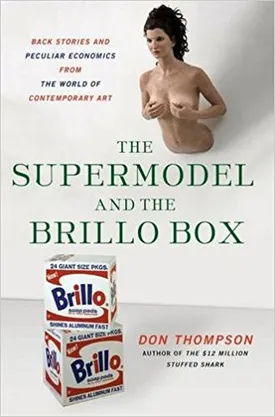The Supermodel and the Brillo Box: Back Stories and Peculiar Economics from the World of Contemporary Art by Don Thompson
Don Thompson’s “The Supermodel and the Brillo Box: Back Stories and Peculiar Economics from the World of Contemporary Art” takes readers on an enthralling journey through the art world, from the production of new works to the auction houses of Sotheby’s and Christie’s. While the world of art may seem intimidating and mysterious to many, Thompson’s expert writing and keen insights make the subject relatable, entertaining, and approachable.
In the first section of the book, Thompson dives into the world of art production, showcasing the creation of a piece of art and its journey to the market. He explains the nuances of the artist’s creation process, the function of agents, galleries, and auction houses in the process, and the economics attached to art creation and sales. These economics, according to Thompson, are based on speculation, hype, and guesswork, as well as more concrete factors, including rarity and the artist’s success in the market.
Thompson then moves on to the story of the book’s title, which serves as a lens through which he examines the strange and ever-changing dynamics of the art world. He tells the story of how Andy Warhol’s famous “Brillo Box” sculpture, originally made from inexpensive cardboard, sold for an astounding amount of money at auction. The story serves to show just how subjectively valued art is and how the market can change and grow seemingly overnight.
The next section delves into the complex world of art appraisal and authentication. Thompson explains the manipulation of the market through the intentional withholding of information by original artists and unscrupulous dealers, as well as the importance of provenance. He highlights the strange economics attached to transactions in the art world, where the asset’s intrinsic value can be dwarfed by its market price.
The final section of the book takes readers to the peculiar world of the auction house, where Thompson illuminates the immense amount of energy and money put into the staging of elaborate exhibitions. He also provides insider perspectives from the likes of auctioneers and curators, revealing the strange sport of vying for works of art and the prevalence of art collectors and speculators.
In conclusion, Don Thompson’s “The Supermodel and the Brillo Box” is a shining example of the strange and obscure world of contemporary art. Through captivating storytelling, engaging insights, and witty anecdotes, the book offers readers an enjoyable peek into the secretive world of art production and sales. From Warhol’s masterpiece to the strange economics of art, the book provides an enlightening look into the wild and ever-changing field of contemporary art.

